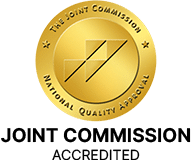Recent statistics show that 4% of adults aged 35-40 reported recent use in 2022. In the same year, 7% used hallucinogens other than LCD, and 8% of adults aged 19-30 reported hallucinogen use too.
It seems that hallucinogen addiction is becoming a growing concern. These mind-altering substances, including LSD, psilocybin, and PCP, can lead to severe physical and mental health issues.
In this article, we’ll cover:
- What hallucinogens are and their types
- Side effects and symptoms of substance abuse
- The hallucinogen withdrawal process
- Treatment options for hallucinogen addiction

Table of Contents
- 1 What Are Hallucinogens?
- 2 Types of Hallucinogens
- 3 What Are the Side Effects of Hallucinogen Use?
- 4 What Are the Symptoms of Hallucinogen Abuse?
- 5 What Does Hallucinogen Withdrawal Look Like?
- 6 How Do Hallucinogens Interact with Other Substances?
- 7 Treatment Options for Hallucinogen Addiction
- 8 Recovering From Hallucinogen Addiction
What Are Hallucinogens?
Hallucinogens are a diverse group of drugs that alter your sensory perception, thoughts, and feelings.
These substances can make you see, hear, or feel things that aren’t real. They work by disrupting communication between your brain and nervous system. This mainly affects the neurotransmitter serotonin.
People often use hallucinogens for their mind-altering effects. They’re usually either seeking a spiritual experience or want to get high.
Further, some hallucinogens come from plants, while others are human-made. Common examples include LSD, psilocybin (found in magic mushrooms), and PCP.
How Do Hallucinogens Work?
When you take hallucinogens, they can affect your body in various ways. You might experience increased heart rate, higher blood pressure, and changes in body temperature.
In your brain, these drugs can alter your perception of time, space, and reality. While some users report positive experiences, others face ‘bad trips’ with frightening hallucinations and intense anxiety.
Long-term hallucinogen use can include persistent psychosis and HPPD (hallucinogen persisting perception disorder), where users experience flashbacks long after drug use.
Types of Hallucinogens
Classic Hallucinogens
Classic hallucinogens, also known as psychedelics, primarily affect serotonin in the brain.
Examples include:
- LSD (Lysergic Acid Diethylamide): A powerful synthetic drug that causes intense, long-lasting trips.
- Psilocybin: Found in magic mushrooms (shrooms), it produces shorter but similarly profound experiences.
- Mescaline: Derived from the peyote cactus, it’s been used in Native American rituals.
These drugs can cause vivid hallucinations, altered sense of time, and intense emotional experiences. Side effects may include anxiety, paranoia, and increased heart rate.
Dissociative Drugs
Dissociative hallucinogens create a sense of detachment from reality. Common types are:
- PCP (Phencyclidine): Also known as ‘angel dust’, it can lead to violent behavior and out-of-body experiences.
- Ketamine: Originally an anesthetic, it’s now used recreationally and in some depression treatments.
- Salvia: A plant-based hallucinogen that causes brief but intense trips.
Users often report feeling disconnected from their body or environment. These drugs can cause memory loss, anxiety, and in high doses, dangerous physical symptoms.
Other Hallucinogens
- DMT (Dimethyltryptamine): A powerful, short-acting hallucinogen found in ayahuasca, a South American brew.
- MDMA: Often considered both a stimulant and hallucinogen, it’s known for creating feelings of euphoria and empathy.
These substances can have varied effects, from intense visual hallucinations to altered emotional states. Side effects may include increased body temperature, dehydration, and in some cases, long-term cognitive changes.
What Are the Side Effects of Hallucinogen Use?
Hallucinogen use can lead to a range of side effects, both short-term and long-term. While experiences can vary, common side effects include:
- Intense sensory experiences
- Altered perception of time and reality
- Increased heart rate and blood pressure
- Nausea and vomiting
- Mood swings and anxiety
- Impaired coordination
- Elevated body temperature
- Dilated pupils
Long-term effects are more concerning. Some users report lasting changes in mood, cognitive function, and mental health.
Additionally, hallucinogens can interact dangerously with other substances, including prescription medications. More on that later.
What Are the Symptoms of Hallucinogen Abuse?
Recognizing hallucinogen abuse can be challenging, but there are several signs to watch for:
- Using hallucinogens more often than intended or in larger amounts
- Neglecting responsibilities at work, school, or home
- Spending excessive money on drugs
- Engaging in dangerous activities while under the influence
- Needing more of the drug to achieve the same effects
- Isolating from friends and family who don’t use hallucinogens
- Experiencing sudden shifts in mood, increased irritability, or anxiety
- Strong urges to use hallucinogens
- Dilated pupils, increased heart rate, or changes in appetite and sleep patterns
If you notice these symptoms in a loved one, it might indicate a substance use disorder. It’s important to seek help from healthcare professionals if you suspect a case of hallucinogen abuse.
What Does Hallucinogen Withdrawal Look Like?
Hallucinogen withdrawal is different from withdrawal from substances like opioids or alcohol.
Most hallucinogens don’t cause physical dependence, but psychological dependence can occur. Here’s what you might experience:
- Intense cravings and a strong urge to use hallucinogens again
- Mood changes, anxiety, depression, or irritability
- Trouble falling asleep or vivid dreams
- Feeling tired or constantly being fatigued
- Difficulty concentrating as your memory might be affected
- Flashbacks of hallucinations long after drug use
- Decreased appetite or loss of interest in food
Note: The severity and duration of these symptoms can vary based on the type of hallucinogen used, frequency of use, and individual factors.
PSA: Don’t try to quit hallucinogens alone. Reach out to an addiction specialist or healthcare provider who can help manage your withdrawal symptoms.
How Do Hallucinogens Interact with Other Substances?
Combining hallucinogens with other substances can be dangerous and unpredictable. These interactions can amplify risks and lead to severe health consequences. Here’s what you need to know about some common combinations:
Alcohol
Mixing hallucinogens with alcohol can be particularly risky as it can lead to:
- Increased dehydration potentially leads to severe health issues
- Unpredictable effects as alcohol can intensify or alter the hallucinogenic experience
- Higher risk of accidents since the combination can severely impair judgment and coordination
- Nausea, vomiting, and a high risk of choking
Antidepressants
Some hallucinogens and antidepressants both affect serotonin levels (a neurotransmitter responsible for happiness). Combined, they can cause a dangerous condition called serotonin syndrome.
Other antidepressants, however, can diminish the effects of hallucinogens like LSD or magic mushrooms. Still, this combination can exacerbate mood disorders or even trigger psychotic episodes.
Antipsychotics
Many antipsychotics can reduce or block the effects of hallucinogens. Some users also report more intense physical side effects when combining these substances. Expect some psychiatric effects or unexpected changes in mood or perception as well.
Treatment Options for Hallucinogen Addiction
The best approach to hallucinogen addiction often depends on your individual needs and circumstances.
Inpatient Treatment Program
Inpatient programs provide 24/7 care in a structured environment. Hallucinogen users live at the treatment center, receiving intensive therapy and support. This option is ideal for severe cases or if you need to step away from daily triggers.
Outpatient Treatment Program
Outpatient programs offer flexibility. You’ll attend regular therapy sessions while living at home. As such, outpatient programs work well for those with milder addiction or strong support systems.
Behavioral Therapy
Cognitive Behavioral Therapy (CBT)
CBT is a common treatment for hallucinogen addiction. It helps you identify and change harmful thought patterns and behaviors related to drug use.
Motivational Enhancement Therapy (MET)
With MET, you’ll learn how to boost your motivation to change. It encourages you to identify your reasons for quitting hallucinogens and strengthens your commitment to recovery.
Contingency Management
In this style of therapy, the therapist uses positive reinforcement, often in the form of vouchers or prizes, to reward drug-free behavior. This can help you stay motivated during the early stages of recovery when cravings are the strongest.
Recovering From Hallucinogen Addiction
Breaking free from hallucinogen drug addiction is possible, and you don’t have to do it alone.
Our experienced team understands the unique challenges of hallucinogen addiction. We provide a range of evidence-based therapies. Those include cognitive behavioral therapy, group sessions, and holistic approaches.
So, whether you need intensive outpatient care or a more structured partial hospitalization program, we’re here to support you every step of the way. Please contact Recreate Life Counseling for additional information about Hallucinogen Addiction Treatment near you.



